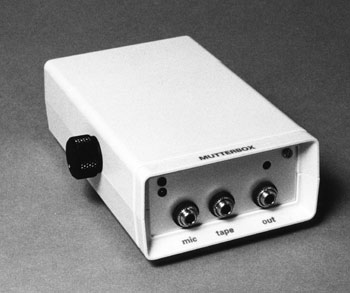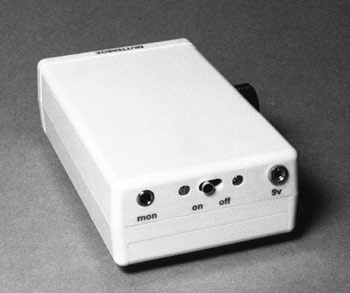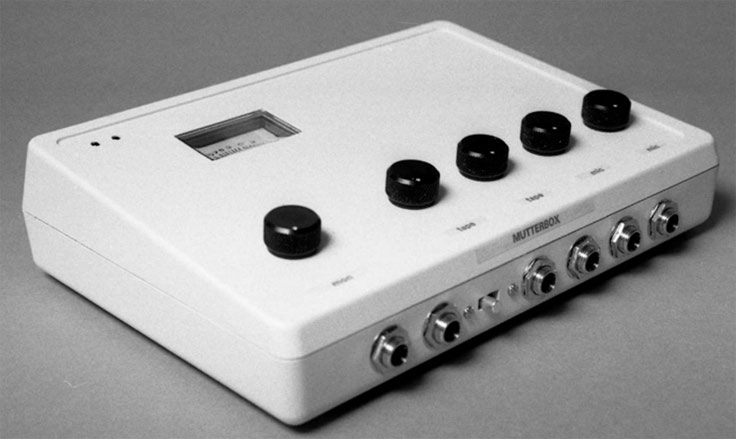As time went on, telephone systems extended across the world, but often calls were difficult to make and of poor quality. Consequently, many of the reports -- referred to quaintly as "despatches" -- were not of sufficient quality to be broadcast and had to be re-voiced in London. That is where the Mutterbox came to the rescue in the late-1970s.
The history of the Mutterbox began partly in Radio New Zealand and partly in the UK commercial station LBC. Although on the staff of BBC World Service, I was permitted to do some reporting from London for RNZ. A member of the RNZ newsgathering staff, Dick Hereford, was an amateur engineer and created a small device to amplify the signal over telephone lines. He supplied me with one. It impressively improved my outgoing signal, but was of a rather crude construction and not portable. I felt it could be improved but didn't know how to go about this. Then a journalist friend working for LBC told me that one of their engineers, a Queenslander Gavan Kelly, was working on a similar device but was not getting much support.
Gavan and I met and I told him that if he could produce a compact, battery-powered device that would improve on the RNZ device and was simple enough to be used by any non-technical person, the BBC would buy it. I gave him my requirements and over the coming months Gavan designed a microchip that would not just boost the outgoing signal but would optimise the narrow frequency range of the old analogue telephone lines.
This was the result, a device that was 11cms x 6cms x 3cms, with just two moving parts, the on-off switch and the outgoing volume control.


At the same time, I produced an instruction manual for BBC reporters titled Can You Hear Me? This included a chapter on how to connect a Mutterbox to a telephone line using crocodile clips.
While the basic Mutterbox was hugely popular, it became clear that a mixer version would be useful and have a significant market. Gavan produced the first one just in time for me to take it to Beijing with a team to cover the Tienanmen Square uprising in 1989. It was about 20cm x 15cm x 8cm and passed every test through some very gruelling high-pressure times.
Gavan later went on to make many more, selling them for a very reasonable £250:

There were rivals for the Mutterbox, such as the Alice Probe and the Comrex, but they were expensive and were not portable. Also, the Comrex required two simultaneous telephone connections when in some parts of the world the reporters were lucky to be able to connect to one.
How did the name come about? Well, it was originally a joke description given to it by Radio New Zealand reporters, resulting from them saying "mutter mutter mutter" when asked to do voice level tests before beginning a broadcast. Gavan preferred the more pedestrian descriptive name, Reporters Broadcast Unit, but eventually accepted Mutterbox -- a name that quickly became famous among radio reporters in the BBC and some other broadcasting organisations.
The Mutterbox was very much a broadcasting device of its time, dating from the late 1970s, but in the mid-1990s its use began to decline as satellite links became cheaper and easily accessible from a laptop computer and the arrival of ISDN (Integrated Services Digital Network) equipment. The internet also became more widely used, then along came sophisticated and relatively cheap smart phones.
Although it would be rare for a Mutterbox to be used these days, a whole generation of radio reporters remember it with undiminished fondness for its simplicity and effectiveness.
Ian D. Richardson, Preddon Lee Ltd, July 2020
(formerly BBC World Service Newsgathering)
Sadly Gavan passed away in February 2024.

